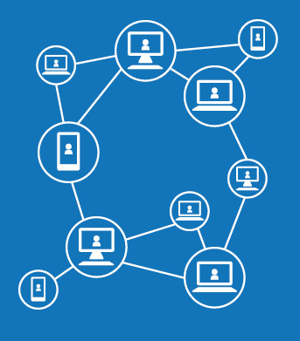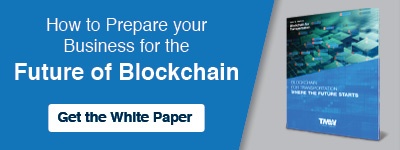Think of blockchain as a high-tech, shared digital ledger spread across all of a business’s components and partnerships.
Applied to a supply chain system, a blockchain can include up-to-date, validated information on shippers, carriers, brokers, vehicles, location information (including distribution centers, warehouses, service centers), drivers, freight information, orders, warranties, appointments, and more.
To understand how blockchain [technology] works, picture a cloud version of a safe deposit box which requires two different keys to open and a third party present as witness to the transaction. After completing the transaction, the contents of the safety deposit box on that specific day, or information about it, is accessible to partners of both keyholders via a secured network. Encryption and peer user validations ensure accuracy of the data and prevents breaches and malware intrusions.
There are three kinds of blockchain networks: public chains, where cryptocurrencies like Bitcoin are traded and the users are anonymous; private chains, which are strictly permissioned and used effectively within organizations as reference data management systems; the third kind is called a consortium, which uses aspects of public and private blockchains to provide and disseminate information and crypto assets to a permissioned set of users (often referred to as nodes) within defined members.The Nasdaq’s blog notes “For an efficient trucking ecosystem, it is critical to have fast, accurate and secure data storage and sharing, and thus the application of blockchain makes good sense.”
For supply chain industries, a consortium blockchain will have numerous tangible benefits on the bottom line and benefit from multiple efficiencies.
For example, consider the downside of load boards, which are inefficient and often contain duplicated and unreliable information. In a blockchain the same information is validated by an identified user and time-stamped to up-to-date veracity.
Industry research shows numerous applications where efficiencies can be gained in areas like smart contracts, driver HOS, service records, proof of delivery, EDI, RFPs, bids, factoring, temperature monitoring, fuel tax reporting, and more. The advantages of using a blockchain in transportation includes decentralized efforts to validate carriers and provide industry information; incentives (including cryptocurrency) for participation/contributions; lower costs; and shared data sources. The contemporary concept of the “Internet of Things” (IoT) is less than 20 years old, but Cisco estimates there will be 50 billion connected devices by 2020. The continuing impacts of technology on the supply chain sector, especially transportation, has no visible plateau. Building a blockchain requires significant time for extensive planning and designing, as well as committed resources. The question you should be asking yourself isn’t if your company is going to need blockchain, but when and how. TMW Systems, with its transportation and technical knowledge, can help you get there faster. Last month we partnered with other industry leaders to form the Blockchain in Transport Alliance (BiTA). Among its goals are “to provide clarity and direction to the development of blockchain technology in the trucking industry.”
Read TMW’s white paper, "Blockchain for Transportation: Where the Future Starts" for further information on how it works and how it can improve your company’s bottom line and operations.
Then share and tell a colleague what you think of the concept.



